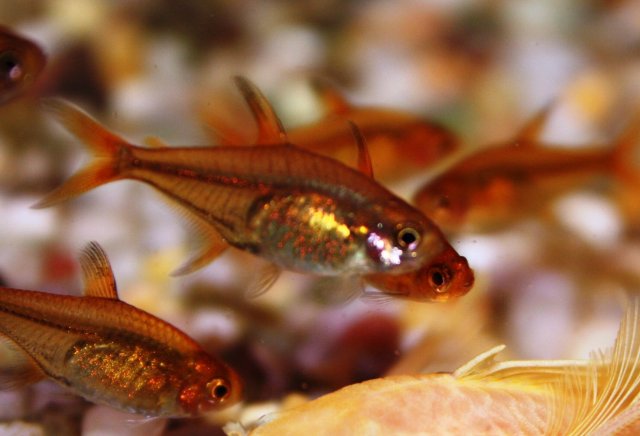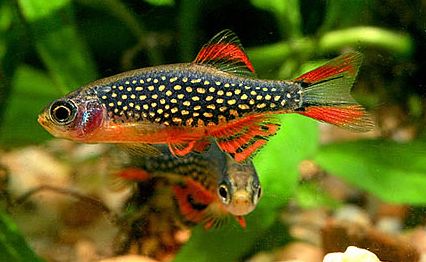Datnioides microlepis

Scientific Name: Datnioides microlepis
Common Name: Indo Datnoid, Indo Tiger, IT.
Care Level: Moderate
Size: 18 inches
pH Range: 6.5-7.5
Temperature Range: 24-28 degrees Celsius (75-82° F)
Origin: Indonesia, plus the Kapuas basin in western Borneo and Musi basin in Sumatra.
Temperament: Can be aggressive toward others of the same species, they will usually be OK with other large fish, although this is not always the case.
Compatible Tankmates: Other large growing fish.
Diet: Carnivorous.
Tank Size for Adult: 180g.
Narrative: This species typically has 7 or 8 bars, including a curved bar through eye, three or four body bars (depending on location), and three tail stripes or bars. The first body bar typically extends through the operculum and crosses the ventral surface. Specimens from Sumatra generally have three body bars, all of which extend across the ventral surface, while specimens from Borneo generally have four body bars, which also cross the ventral surface. Partial bars are almost invariably absent. Branched dorsal rays 14-18; branched anal rays 9-11, usually 10. (Ref. Fishbase.org), (adapted by Jesse aka itchyophile)
A large tank with plenty open swimming space is required for D pulcher, although as this fish grows slowly a smaller tank can be used as a grow out. As these fish grow large a 6x2x2 tank is recommended but bigger is always better. A large amount of filtration and decent water change schedule is a must with these fish as they prefer good water quality. Feeding D pulcher when small and newly introduced to the aquarium can be a challenge and live foods may only be taken. Feeding habits can be changed, and with perseverance foods like prawn, whitebait (silversides), beef heart, earthworms and even pellets can be accepted and a varied diet is always best.
Scientific Name: Datnioides microlepis
Common Name: Indo Datnoid, Indo Tiger, IT.
Care Level: Moderate
Size: 18 inches
pH Range: 6.5-7.5
Temperature Range: 24-28 degrees Celsius (75-82° F)
Origin: Indonesia, plus the Kapuas basin in western Borneo and Musi basin in Sumatra.
Temperament: Can be aggressive toward others of the same species, they will usually be OK with other large fish, although this is not always the case.
Compatible Tankmates: Other large growing fish.
Diet: Carnivorous.
Tank Size for Adult: 180g.
Narrative: This species typically has 7 or 8 bars, including a curved bar through eye, three or four body bars (depending on location), and three tail stripes or bars. The first body bar typically extends through the operculum and crosses the ventral surface. Specimens from Sumatra generally have three body bars, all of which extend across the ventral surface, while specimens from Borneo generally have four body bars, which also cross the ventral surface. Partial bars are almost invariably absent. Branched dorsal rays 14-18; branched anal rays 9-11, usually 10. (Ref. Fishbase.org), (adapted by Jesse aka itchyophile)
A large tank with plenty open swimming space is required for D pulcher, although as this fish grows slowly a smaller tank can be used as a grow out. As these fish grow large a 6x2x2 tank is recommended but bigger is always better. A large amount of filtration and decent water change schedule is a must with these fish as they prefer good water quality. Feeding D pulcher when small and newly introduced to the aquarium can be a challenge and live foods may only be taken. Feeding habits can be changed, and with perseverance foods like prawn, whitebait (silversides), beef heart, earthworms and even pellets can be accepted and a varied diet is always best.




